Who were the German Saxons in Transylvania?

You can see seven towns in the Coat of Arms of Transylvania that represent the Saxon cities. The Transylvanian Principality as an independent state – or a semi-vassal of the Ottomans – was based on the agreement of three groups of people: the Hungarian noblemen, the German Saxons, and the Székely community whose symbols, the Sun and the Moon are also in the Coat of Arms. These three groups ruled Transylvania from 1538 onward, usually in harmony though sometimes in conflict with one another, under the authority of the king or the prince. In the time of the Principality, they were governed by the Prince whose absolute power was greater than the Habsburg king’s power over his subjects. As for the extent of the independence of Transylvania, other articles are going to be uploaded soon.
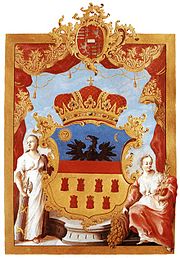
The seven German cities of southern Transylvania (Siebenburgen, Septem Castra, Dacia, Erdély) are the next:
Beszterce ( Bistritz / Bistrița), Nagyszeben or it is called just Szeben (Sibiu, Hermannstadt), Kolozsvár (Klausenburg / Cluj), Brassó (Kronstadt / Brasov), Medgyes (Mediasch / Medias), Szászsebes (Mühlbach / Sebeșul Săsesc), Segesvár (Schassburg / Sighișoara). You can read more about them among the cities and castles that I listed on my page.
Szeben (Sibiu, Hermannstadt) was an important cultural center within Transylvania, while Brassó (Kronstadt) was a vital political center for the Saxons. Let us note that there were many other German people living in several cities all over the Kingdom of Hungary, not just in Transylvania: check out my post about the Szepesség in North Hungary (now in Slovakia):
https://www.hungarianottomanwars.com/essays/szepesseg/
As for Transylvania, the initial phase of German settlement began in the mid-12th century, with colonists traveling to the region around Szeben (Hermannstadt, Sibiu). These Germans were sought for their mining expertise and ability to develop the region’s economy. Most colonists in this area came from Luxembourg and the Moselle River region.
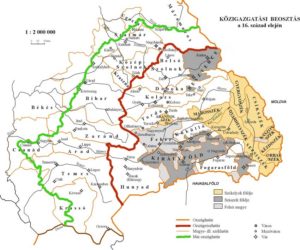
The second phase of German settlement during the early 13th century consisted of settlers primarily from the Rhineland, the Southern Low Countries, and the Moselle region, with others from Thuringia, Bavaria, and even from other lands of France. Continued immigration from the Empire expanded the initial colonist area of the Saxons further to the east. Settlers from the Hermannstadt region spread rapidly into neighboring lands. The term “Saxon” was applied to all Germans of the region because the first German settlers who came to the Hungarian kingdom were poor miners or convicted groups from Saxony.
In 1211, King András II of Hungary invited the Teutonic Knights to settle and defend the southeastern corner of Transylvania, to guard the mountain passes of the Carpathians against the nomadic Cumans. The Knights constructed numerous castles and towns, including the major city of Brassó (Kronstadt, Brasov). Alarmed by the Knights’ rapidly expanding power, in 1225 King András II expelled the Order, which henceforth relocated to Prussia in 1226, although their colonists remained in Transylvania.
The Kingdom of Hungary’s medieval eastern borders were therefore defended in the northeast by the Nösnerland Saxons, in the east by the Hungarian Border Guard tribe Székelys, in the southeast by the castles built by the Teutonic Knights and Burzenland Saxons, and in the south by the Altland Saxons. Here is more about the Székelys:
https://www.hungarianottomanwars.com/essays/who-were-the-szekelys/
King András II allowed the colonists to retain the rights and obligations included within the Diploma Andreanum of 1224. The territory that was colonized by Germans covered an area of about 30,000 km˛ and they were organized in the Saxon Seats. Perhaps they followed the administration structure of the Székelys who had been organized in Seats (called Szék meaning “chair or seat in the English language).
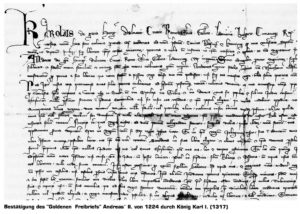
In the aftermath of the Mongolian invasion, in 1241, many Transylvanian towns were fortified with stone castles and they began to develop economically. In the Middle Ages, about 300 villages were defended by Kirchenburgen, or fortified churches with massive walls, built not exclusively only in Saxon settlements. Though many of these fortified churches have fallen into ruin, nowadays south-eastern Transylvanian region has one of the highest numbers of existing fortified churches from the 13th to 16th centuries as more than 150 villages in the area count various types of fortified churches in good shape, seven of them being included in the UNESCO World Heritage. One of them was the famous church of Szászveresmart, (Roiderbrich, Rotbav), 24 kilometers from Brassó (Brasov, Kronstadt), its ancient tower was built in 1250, and has recently collapsed in 2016, due to utter neglect.
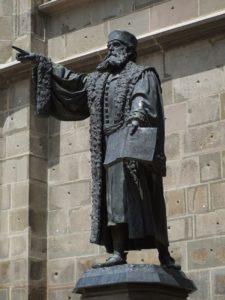
Under the influence of Johannes Honterus, the great majority of the Transylvanian Saxons embraced the new creed of Luther. Almost all of them became Lutherans, with very few Calvinists, while other minor parts of the Transylvanian Saxons remained staunchly Catholics or were converted to Catholicism later on. In Transylvania being a Saxon meant being a Lutheran and the Lutheran Church was a Volkskirche, i.e. the „national church” of Transylvanian Saxons. As the semi-independent Principality of Transylvania was one of the most religiously tolerant states in Europe at the time, the Saxons were allowed to practice their own religion (meaning that they enjoyed religious autonomy).
The town of Birthalm (Berethalom, Biertan), with its fortified church, was the seat of the Lutheran Evangelical Bishop in Transylvania between 1572 and 1867. You can read more about Biertan here:
https://www.hungarianottomanwars.com/transylvania/berethalom/
Politically speaking, the Saxons had always been loyal to the Hungarian king or to the Prince of Transylvania. Yet, it is natural that many times they supported the Habsburgs or those powers who offered more safety. Sometimes they were very unfortunate, according to a Saxon singer Michel Beheim who described how Voivode Vlad III of Wallachia had hundreds of Saxons impaled. Consequently, the Saxons did not have much love for the Wallachians in the 15th century.
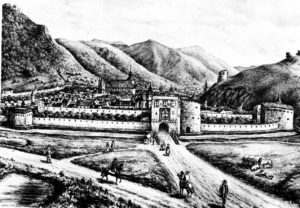
The Saxons were due to give a certain number of soldiers to the Prince in case of war just like the Hungarians or the Székelys. In war, they were commanded by the Judge of the Country. The Saxons had to send mercenary infantry from their towns combined with the artillery and train provided by them.
During the 17th century period of Ottoman wars, the Saxons’ military value, similarly to the Székelys, decreased. In contemporary muster lists, their soldiers were described as „a good musket, bad musket but at least he has a sword…has a lance…has an iron pitchfork…has a cudgel…he is blind…this is deaf…this one is crippled…” Their training and discipline were also deficient.
Warfare between the Habsburg Monarchy and Hungary against the Ottoman Empire from the 16th–18th centuries decreased the population of Transylvanian Saxons. Later new settlers appeared but by the end of the 20th century, they had almost all disappeared due to the systematic ethnic cleansing of Romanian domination, ordered by the communist Ceausescu.
Finally, Germany purchased almost all of them from the last Romanian dictator and had them settled down in the Fatherland after some 900 years of a detour. When I was visiting the Saxon towns in the 1980s, there was a sad joke like this: „Why are the Saxon children so cute? – Because they were made for export.”
They numbered 250,000 in 1910 and there were 15,000 in 2004. Presently their average age is 69. Sadly, many times their empty houses are occupied by Roma people (Gypsies) who do not preserve their condition properly.
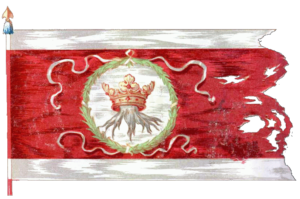
You can find many Saxon towns and fortified churches on my page if you check out the main menu and look for “Castles in the Hungaries”.
Dear Readers, I can only make this content available through small donations or by selling my books or T-shirts.
If you like my writings, please feel free to support me with a coffee here:
You can check out my books on Amazon or Draft2Digital, they are available in hardcover, paperback, or ebook:
https://www.amazon.com/dp/198020490X
or at https://books2read.com/b/boYd81


My work can also be followed and supported on Patreon: Become a Patron!http://Become a Patron!



